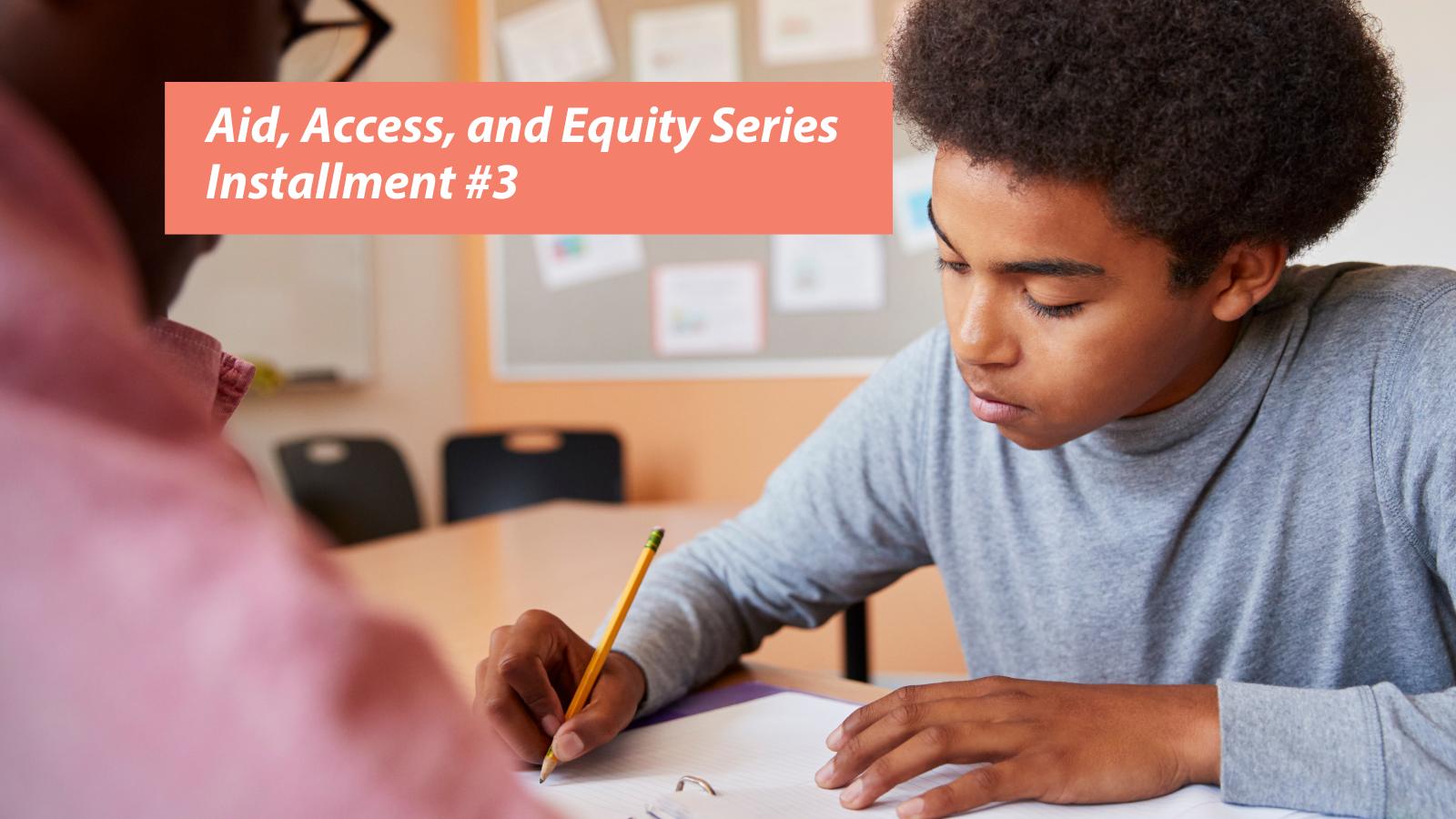AID, ACCESS, AND EQUITY BLOG SERIES: To ensure all students are aware of financial aid options, a Universal FAFSA policy will be implemented this academic year so that New York students, regardless of citizenship status, have support and resources to complete the FAFSA and state aid applications, such as the Tuition Assistance Program and the DREAM Act. Students can sign a waiver to opt out of completing the FAFSA, and districts and schools will be responsible for tracking completion and waivers.
To support this effort, EdTrust-New York hosted discussion groups with students and counselors to inform a five-part blog series on how this policy can help students, best practices for FAFSA completion, and additional supports needed for implementation.
High school and college students in New York State agree: Everyone should know what financial aid they are eligible for.
Yet year-over-year, not all do: 40% of the class of 2023 in New York State did not fill out the FAFSA, leaving $226 million in Pell grants behind.
As a matter of equity, completing the FAFSA and state aid financial aid forms can open doors to college for students from low-income backgrounds, immigrant students, and first-generation students. Yet the students we spoke with had varying experiences getting support with financial aid forms. While some had the utmost support from their schools, others felt they did not have adequate information, requiring them to seek support and information outside of school.
Cora, a college student, filled out the FAFSA herself after rounds of personal research. Upon meeting with her school counselor, her plans shifted.
“I initially had in mind to attend a local college due to fees,” said Cora. “But my counselor sat me down one day and told me I could register for a grant. She introduced me to that process, but it was unclear during the [initial FAFSA] application process.”
Cora’s story illustrates how high school experiences and resources can differ for students, highlighting the inequities embedded in New York’s education system. At the same time, many schools across New York State have worked diligently to create school cultures that emphasize FAFSA completion and postsecondary planning. These bright spots throughout the state are evidenced by EdTrust-New York’s yearly FAFSA Completion Challenge.
The vast majority of students in our discussion groups support Universal FAFSA. They believe it will provide future high school students with a better understanding of financial aid opportunities and minimize the number of students who do not complete the FAFSA moving forward. They recognize, however, that not all students are interested in postsecondary education and are in favor of allowing students to sign a waiver to opt out.
“The fact that it is a requirement, but there is an option to opt out makes it fair for everyone,” said Jose, a high school senior. “So that those that need to know about it do, and those that don’t also know that they don’t have to do it.”
Counselors across New York State we spoke to, on the other hand, acknowledge that there is not one prescription for FAFSA completion at schools. There can be challenges every year for differing school communities – on top of the issues students and families experienced with Better FAFSA.
These counselors recounted difficulties they have faced, from having a high student population to counselor ratio to only knowing the number of students who completed the FAFSA but not specifically who. Counselors also shared that families may be reluctant to share whether their child has completed the DREAM Act Application because of their immigration status.
Counselors expressed concerns about tracking down completion numbers or opt-out waivers to implement Universal FAFSA. They indicated they would need district leaders to support counselors’ data by creating and utilizing online dashboards that would allow them to track which of their students had completed the FAFSA, DREAM Act application, or the opt-out waiver.
“A lot of our families choose to [apply] without letting us know what they’re doing or what they’re applying to,” said Kelly, a counselor in Valley Stream. “It’s a private thing.”
Moreover, counselors say they can be held accountable for supporting students and providing information with the resources they have available, but ultimately it is up to the students and families if they want to pursue the process.
To increase FAFSA completion, schools will need to focus on the equity gaps between completion rates. Schools that have the highest share of students from low-income backgrounds historically have lower completion rates than schools with the lowest shares of students from low-income backgrounds. EdTrust-New York’s yearly statewide analyses of FAFSA completion rates have revealed since the inception of the New York FAFSA Challenge in 2019.
“One of the goals [for Univeral FAFSA should be] to find the best practices out there – you may have low-income schools that have high completion rates and find out what they are doing. What kind of help do they have? Do they work with CBOs [community-based organizations]?” said Bob Rotunda, executive director of the New York State School Counselors Association.
“There’s probably a thousand reasons why it’s not happening. You hear examples all the time. We have to find out the seven reasons why it is happening and replicate that.”
Community-based organizations and nonprofits like EdTrust-New York are a starting point to showcase best practices and provide resources for schools to build capacity. At the same time, state, education, and district leaders need to listen to students, counselors, and principals to learn what supports students and schools need to make Universal FAFSA a reality.
In our next installment of this Aid, Access, and Equity series, we will celebrate best practices schools are implementing to support FAFSA completion. The installment will also feature ideas students and counselors have for more support when districts and schools move to implement Universal FAFSA – from tracking data to informing students about their financial aid options.

